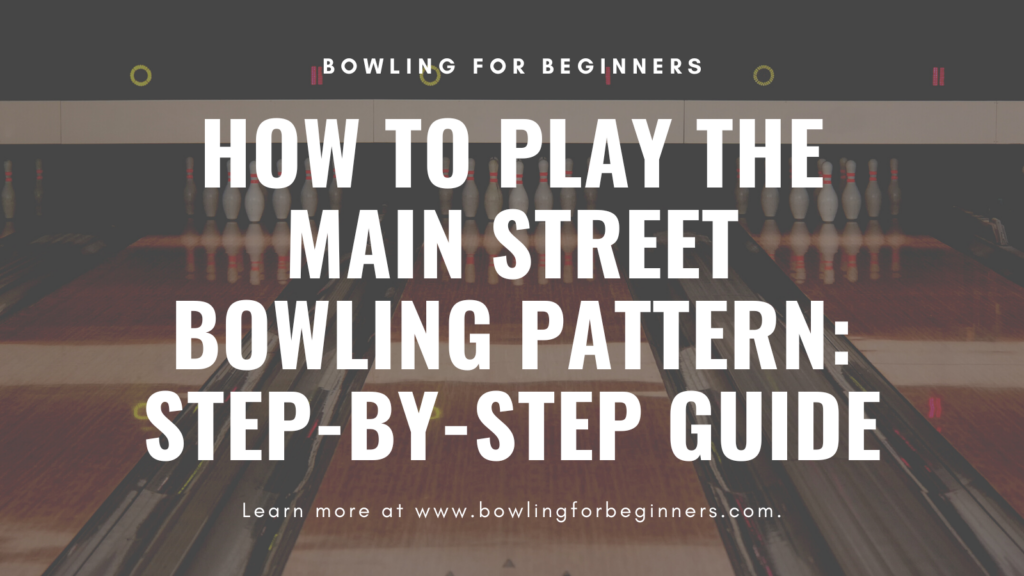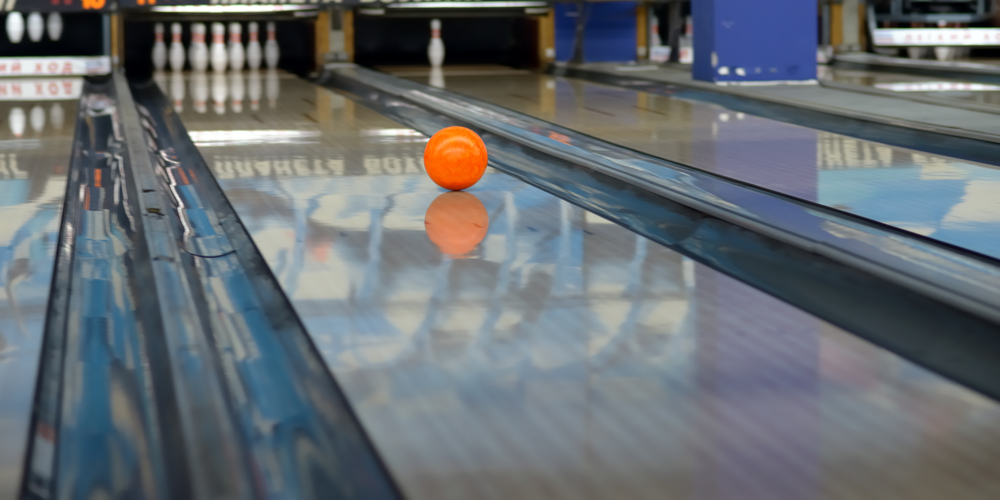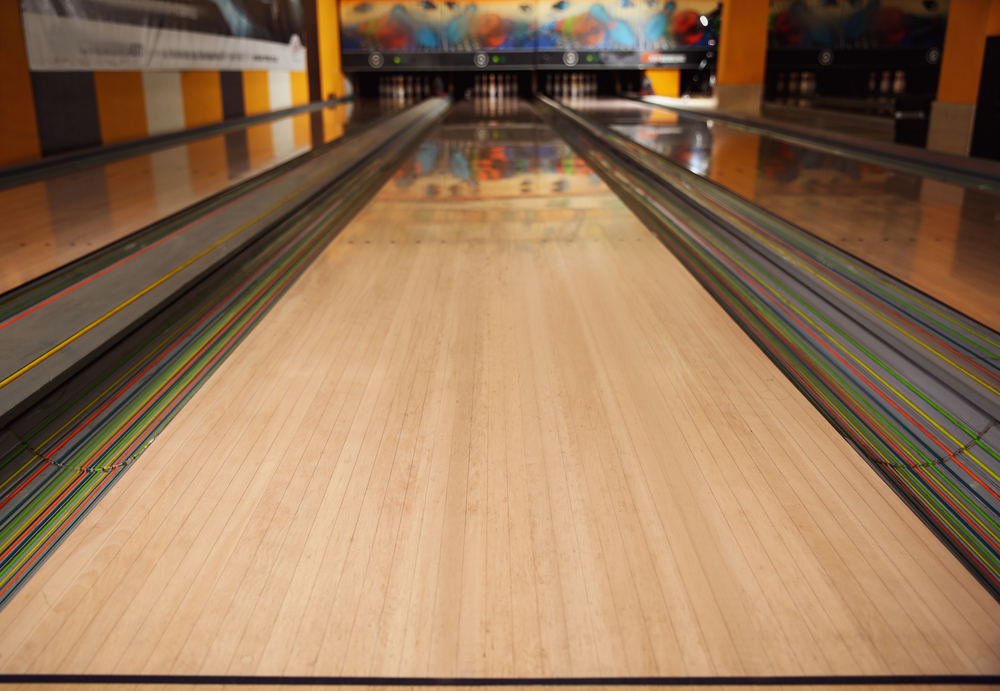
Oil patterns help to streamline bowlers' playing experiences, putting them on a level playing field. And the Main Street oil pattern is one of the most popular and distinctive ones out there. Want to know more?
You're in the right place! This article will discuss the Main Street oil patterns in bowling. We'll break down the technical aspects of the design (in layman's terms), discuss the benefits and drawbacks of this pattern, and give you some tips on how to bowl on it to maximize your scoring potential.
Before we delve into the specifics of the Main Street, we'd like to introduce you to oil patterns in general. Knowing the basics will make it easier to understand the rest of the article.
An oil pattern is essentially how a lane is slathered in oil with a lane machine. It affects how the ball rolls down the lane. Depending on the oil’s pattern, the ball may hook more, hook less, skid further, speed up, slow down, or otherwise react.
Therefore, your strategy may change based on the oil pattern you encounter. One thing to remember regarding oil patterns is that the ball will hook more if a lane is very dry.
On the other hand, if it's super oily, the ball will typically go straighter. The oil distribution of a given oil pattern may vary considerably.
Contents
What Is the Main Street Oil Pattern?
Now that we understand what oil patterns are, let's get specific about the Main Street oil pattern. Main Street is a Navigation oil pattern that most will find very easy to bowl on, and has two versions of the pattern.
Main Street Oil Pattern v1
Main Street oil pattern v1 is 41 feet long, with 19.3 ml of oil in total. There are 8.55 ml of forward oil and 10.75 ml of reverse oil.

The pattern focuses most of the oil up the middle of the lane–similar to the typical house pattern. There's combined oil from the foul line to the 15-foot mark, reverse oil from the 15 to 35-foot mark, and then it's all buffed out from there. There are also a couple of feet of forward oil along the gutters near the foul line.
Main Street oil pattern v2
Main Street oil pattern v2 is 41 feet long, with 24.35 ml of oil in total. There are 14.65 ml of forward oil and 9.7 ml of reverse oil.

Like its cousin, v2 of this pattern focuses most of the oil up the middle of the lane–similar to the typical house pattern (THP). There's combined oil from the foul line to the 30-foot mark, reverse oil from the 15 to 35-foot mark, forward oil around the edges, and then it's all buffed out from there.
These patterns are known to be easy to maneuver, and that's why it's part of the Kegel recreational series of patterns. If you've bowled at any bowling alley in the United States, you may have played on this pattern before. It's one of the most popular oil patterns used for house lanes.
What Are the Benefits of the Main Street v1 and v2 Oil Patterns?
The main benefits of the Main Street patterns are its predictability and relatively easy to read. Since the oil is focused in the middle of the lane, most avid and professional bowlers can quickly predict how the ball will react. The patterns are also easy to get used to and are geared toward those who bowl straight, which beginners tend to do.

What Are the Drawbacks of the Main Street Oil Pattern?
The benefits of the Main Street oil pattern are also its drawbacks. Because the patterns are so easy to read, they can be repetitive and boring for some bowlers.
In addition, because the oil is focused on the middle of the lane from the foul line to the 35-foot mark or so, getting a consistent hook on the ball can be challenging. The heavy oil minimizes friction between the lane and the bowling ball, resulting in less hooking potential. This can be frustrating for bowlers who prefer patterns that provide more hook potential.
How to Bowl on the Main Street Oil Patterns
How you should bowl on the Main Street Oil Pattern will be determined by your bowling style. If you're a straight bowler, you'll likely find this pattern relatively easy to score on.
All you'll need to do is throw your ball straight down the lane, adjusting your speed and target based on how the oil breaks up as the game progresses.
But if you prefer to hook to get into the pocket (between 1 and 3 pin for right handers and between 1 and 2 pin for left handers), you need to ensure that you've got the right ball that can hook strongly after it exits the oil.
The best ball type for hooking on this pattern is a solid reactive one. These balls have a coverstock that creates maximum friction with the lane, enabling it to turn sharply when it reaches the dryer boards at the end of the pattern.
You can also try to use the dry, outermost areas of the lane to your advantage. By targeting this area, you can get your ball to hook back into the pocket, provided you've got the skill to control your ball to this extent.
The further you get into your game, the more the oil will break down, and the more the pattern will change. The key here is to be patient, experiment a bit, and be willing to adjust as needed. The better you understand the design and equipment, the easier it will be to score strikes.
Should Beginners Bowl on the Main Street Oil Patterns?
Beginners should definitely bowl on the Main Street patterns v1 and v2. These patterns are designed for those who are still learning the game and don't yet have a strong hook. If you're a beginner, you'll likely find this pattern one of the easier ones to score on.
One thing to keep in mind is that you can (and should) move on to other patterns after you master either of these. So keep exploring patterns if you want to continue to progress and improve your game. The Main Street patterns are a good foundation, but they are not the only patterns you should bowl on.
Other, more challenging patterns will help you develop your skills further. Challenge patterns like the Sunset Strip and Route 66 are a step up from Main Streets and will teach you greater control and strategy skills.
Then there are the sport patterns, like the Highway to Hell and Winding Road - these are designed for competitive bowling and will really test your limits.
What Ball Should Beginners Use on the Main Street Oil Pattern?
For absolute beginners who bowl straight, we recommend using a house ball. These balls are made of polyester, which meshes well with the oily conditions of the Main Street oil patterns. With this ball, you'll be able to hit your target more often than not and avoid some of those gutter balls.
But as you experiment with hook shots, you'll eventually need to pick up a ball geared more toward that type of bowling.
Where to Play on the Main Street Oil Patterns
If you want to play on the Main Street oil patterns, you're in luck! You'll find these oil pattern almost everywhere, as it's one of the most common patterns in bowling alleys. But if you want to be sure that your local alley has this pattern, it's best to give them a call beforehand.

Related Articles
- Oil Pattern Bowling
- Beginner Friendly Bowling Pattern
- Difference Between Symmetrical and Asymmetrical Bowling Balls
To sum up, the Main Street oil patterns are a predictable and easy-to-score-on pattern for beginners. They serve as a great foundation for those who want to move to more challenging patterns later on. The key is to be patient, experiment, and adjust as needed.
The better you understand the pattern (regardless of the version) and your equipment, the easier it will be to get those strikes. And that's everything you need to know about the Main Street oil patterns!
We hope you found this guide helpful and that you'll put what you've learned to use the next time you hit the lanes. We wish you the best of luck as you discover more and more about this great sport!
Kira Byrd, a Certified Fraud Examiner, holds a B.S. in Accounting from the University of Alabama at Birmingham. With a passion for bowling from her childhood, Kira has poured her expertise and personal experiences into creating and nurturing Bowling For Beginners. Kira's mission is to meet new bowlers where they are and guide them toward consistently achieving higher scores. With a focus on skill development and strategic techniques, she empowers readers to take control of their game and unlock their true potential.
Bowling For Beginners embodies strict editorial integrity, ensuring reliable and unbiased information. Kira's commitment to delivering valuable insights and practical strategies is reflected in every article. Here's an explanation of our editorial policy and how we get money.







